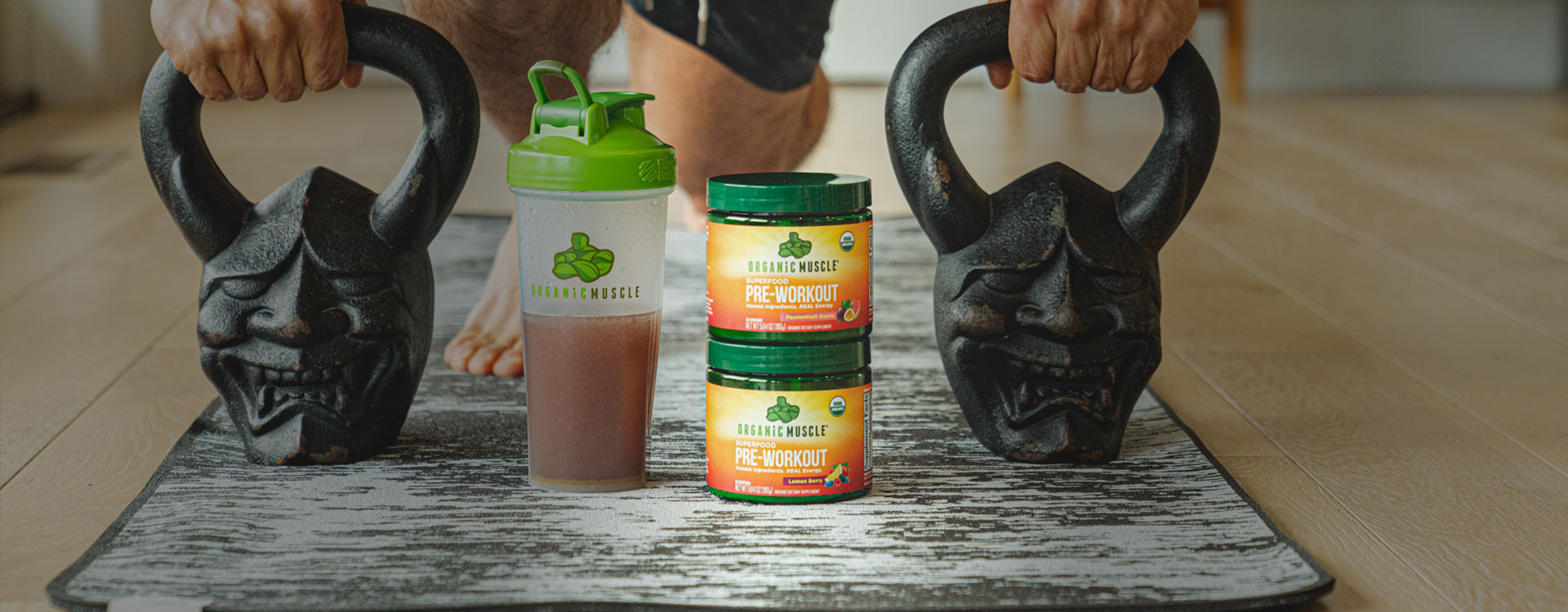Key Takeaways:
- Incorporate Interval Training to Boost Speed and Endurance: Interval training is an effective method for improving VO2 max, lactate threshold, and running economy, enabling runners to perform faster for longer periods.
- Focus on Strength Workouts Like Hill Repeats: Hill repeats build lower body strength and enhance explosive power, improving acceleration and speed in both sprints and distance running.
- Combine Variety in Workouts to Maximize Results: A mix of interval training, tempo runs, and recovery sessions ensures balanced improvement in speed, power, and endurance, while reducing the risk of injury.
Looking to boost your running speed and unleash more explosive power with each stride? Whether you're training for a race, looking to improve your athletic performance, or simply aiming to become a faster, more powerful runner, the right workouts can make all the difference. Speed and power are not just about running harder — they require targeted training that focuses on technique, strength, and stamina.
In this article, we’ll explore the 10 best running workouts designed to increase your speed and build power. These workouts include a mix of interval training, hill sprints, strength-based exercises, and technique drills to help you run faster and more efficiently. Ready to break your personal best? Let’s get started with the most effective running workouts to take your performance to the next level!
Why Running Workouts Are Essential For Speed And Power
Running workouts are crucial for developing speed and power, as they focus on building both cardiovascular endurance and muscular strength. By incorporating sprinting, interval training, and hill runs into your routine, you can target fast-twitch muscle fibers that are responsible for explosive movements.
These workouts help improve the efficiency of your stride, increase your running economy, and boost your overall speed, allowing you to run faster over both short and long distances. Additionally, running workouts enhance your body’s ability to deliver oxygen to muscles more effectively, contributing to better stamina and performance.
Power is equally important in running, especially for athletes who rely on bursts of speed or quick acceleration. Running workouts that emphasize resistance training, such as hill sprints or running with added weight, develop lower body strength and improve the ability to generate force quickly. This translates into more powerful strides, faster acceleration, and greater agility. Whether you’re aiming for athletic performance or overall fitness, running workouts are a key factor in improving both speed and power, making them essential for any training program.
The Benefits Of Interval Training For Speed And Endurance
Interval training, a cornerstone among running workouts, is an incredibly effective method to increase both speed and power. At its core, interval training involves alternating periods of high-intensity running with lower-intensity recovery phases. This training modality enhances aerobic capacity and elevates anaerobic endurance, providing a dual benefit crucial for runners aiming to improve their performance.
Accelerates VO2 Max Improvements
VO2 max, the maximum amount of oxygen your body can utilize during exercise, is a critical determinant of endurance performance. Interval training sparks significant improvements in VO2 max by pushing the body to adapt to the stress of oxygen depletion during high-intensity bursts.1 This adaptation enhances oxygen utilization during runs, allowing for improved endurance and speed.
Increases Lactate Threshold
The lactate threshold refers to the intensity at which lactate starts to accumulate in the bloodstream.2 By incorporating interval training, runners can elevate their lactate threshold, meaning they can maintain higher speeds for longer before fatigue sets in. This is essential for extending the duration at which a runner can perform at their peak capacity.
Boosts Running Economy
Running economy is about doing more with less; it's the amount of oxygen used at a given pace. Runners can improve their running economy through the varied pace of interval training, enabling them to use oxygen more efficiently. This efficiency translates to running faster without using more energy, a key factor in both sprinting and long-distance running.
Enhances Fast-Twitch Muscle Fibers
Interval training taxes the fast-twitch muscle fibers crucial for short, explosive movements. By increasing the strength and efficiency of these fibers, runners can boost their speed and power. This improvement is particularly beneficial for athletes looking to surge at the end of a race or clear challenging terrain.
Encourages Mental Toughness
The psychological benefits of interval training should not be underestimated. Pushing through the discomfort of high-intensity intervals fortifies mental resilience, teaching runners to stay committed and push their limits. This mental toughness is essential for overcoming challenges during training and competitions.
10 Best Running Workouts To Increase Speed And Power
Improving your running speed and power requires a combination of various training methods tailored to enhance your strength, endurance, and running technique. Here’s a list of ten effective workouts designed to help you become a faster, more powerful runner.
Interval Training
Overview: Interval training involves alternating between high-intensity efforts and lower-intensity recovery periods.
Benefits: This workout improves aerobic and anaerobic capacity, enhancing speed and endurance.
Implementation:
- Warm up for 10-15 minutes at an easy pace.
- Sprint for 30 seconds at near maximum effort.
- Recover with 1-2 minutes of slow jogging or walking.
- Repeat for 6-10 rounds.
- Cool down for 10 minutes.
Tempo Runs
Overview: Tempo runs are sustained efforts at a "comfortably hard" pace, usually around 80-90% of your maximum heart rate.
Benefits: This workout enhances your lactate threshold, allowing you to maintain a faster pace for longer durations.
Implementation:
- Start with a 10-minute warm-up.
- Run at tempo pace (just below your 10K race pace) for 20-40 minutes.
- Cool down for 10 minutes.
Hill Repeats
Overview: Running uphill builds strength and power in your legs while improving your cardiovascular fitness.
Benefits: This workout enhances leg strength, improves running form, and boosts overall speed.
Implementation:
- Find a hill that takes 30 seconds to 1 minute to run up.
- Warm up for 10-15 minutes.
- Sprint up the hill, focusing on powerful strides and form.
- Jog or walk down to recover.
- Repeat for 6-10 rounds.
- Cool down for 10 minutes.
Fartlek Training
Overview: Fartlek, meaning "speed play" in Swedish, combines continuous running with varied pace bursts.
Benefits: This workout improves both speed and endurance, making it effective for all race distances.
Implementation:
- Warm up for 10-15 minutes.
- Alternate between fast bursts (1-3 minutes) and easy running (2-5 minutes) for 20-40 minutes.
- Cool down for 10 minutes.
Long Runs
Overview: Long runs build endurance and help your body adapt to longer distances.
Benefits: This workout enhances aerobic capacity and promotes fat utilization as an energy source.
Implementation:
- Run at a comfortable pace for 60-120 minutes, depending on your fitness level.
- Focus on maintaining a steady effort.
- Incorporate some faster intervals in the last 20 minutes.
Speed Workouts on the Track
Overview: Track workouts typically involve running short distances at high speeds with ample recovery.
Benefits: This method improves speed, running form, and pacing strategies.
Implementation:
- Warm up for 10-15 minutes.
- Run 400 meters at race pace, then recover with a slow jog for 1-2 minutes.
- Repeat for 4-8 rounds.
- Cool down for 10 minutes.
Strength Training for Runners
Overview: Incorporating strength training, particularly lower body exercises, enhances power and running efficiency.
Benefits: This workout helps prevent injuries and improves overall running mechanics.
Implementation:
- Perform squats, lunges, deadlifts, and calf raises 2-3 times a week.
- Aim for 3 sets of 8-12 reps for each exercise, focusing on proper form.
Plyometric Drills
Overview: Plyometrics involve explosive movements that enhance strength and speed.
Benefits: This training method increases muscle power and improves running economy.
Implementation:
- Include exercises like box jumps, burpees, and bounding in your routine.
- Aim for 2-3 sets of 10-15 reps, focusing on explosive movements and quick landings.
Progressive Runs
Overview: A progressive run involves gradually increasing your pace throughout the workout.
Benefits: This method improves pacing strategies and teaches you to finish strong.
Implementation:
- Warm up for 10-15 minutes.
- Start at an easy pace and gradually increase your speed every 5-10 minutes.
- Finish at your tempo or race pace for the last few minutes.
- Cool down for 10 minutes.
Recovery Runs
Overview: Recovery runs are slow-paced, easy runs designed to aid in recovery while maintaining mileage.
Benefits: These workouts promote muscle blood flow, helping with recovery and reducing soreness.
Implementation:
- Run at a conversational pace for 30-60 minutes.
- Focus on relaxed breathing and form, allowing your body to recover.
How To Choose The Right Running Workouts For Your Fitness Goals
Selecting the right running workouts is paramount in reaching your fitness objectives, improving speed, increasing power, or enhancing overall fitness. With myriad options available, it's crucial to identify workouts that align with your goals and current fitness level. Here are steps to guide you through the selection process, ensuring you maximize your efforts and outcomes.
Assess Your Current Fitness Level
Begin by evaluating your current fitness state. If you're new to running, start with workouts that build a foundation of endurance before progressing to more intense sessions. For seasoned runners, identify areas needing improvement, such as speed or endurance, and tailor your workouts accordingly.
Define Your Fitness Goals
Clarity on your objectives steers the direction of your workout regimen. Are you aiming to set a new personal best in a 5K? Or perhaps you're training for a marathon? Maybe your focus is on building strength and power for better overall performance. Whatever your goals, they should directly influence the type of running workouts you choose.
Consider Workout Diversity
Incorporating a variety of running workouts can prevent training plateaus and enhance overall performance. Mix speed work, long runs, hill training, and recovery runs to challenge your body in different ways. This approach improves your running capabilities and minimizes the risk of injury from overuse.
Listen to Your Body
Understanding your body's signals is key to choosing the right workouts. If you're feeling fatigued or sore, opting for a recovery run or rest day might be more beneficial than pushing through a high-intensity session. Balancing challenging workouts with adequate recovery is essential for sustainable progress.
Align Workouts with Lifestyle and Schedule
Consider how running workouts can fit seamlessly into your lifestyle. If you're juggling a busy schedule, shorter, high-intensity sessions might be more practical than longer runs. Conversely, incorporating longer, endurance-building workouts might be feasible if you have more flexibility.
Use Supplements Wisely
Incorporating high-quality supplements, such as those Organic Muscle offers, can support your training efforts and recovery. Certified Organic, non-GMO, Vegan, Gluten-Free, Keto-Friendly, and Dairy-Free supplements fuel your body with pure, effective ingredients. Match your supplement regimen to your workout demands and nutritional needs for optimum performance and recovery.
Nutrition And Recovery: Fueling Your Body For Success
When it comes to running, especially workouts focused on increasing speed and power, nutrition and recovery play pivotal roles in achieving your fitness goals. Proper fueling and recovery strategies enhance performance, prevent injuries, and promote faster progress. Here’s how to optimize your nutrition and recovery in conjunction with running workouts:
Pre-Workout Nutrition: Fuel for Performance
- Carbohydrates: Your body relies on glycogen (stored carbs) for quick energy during speed and power workouts. Include complex carbs like oatmeal, whole grains, or fruits before your run to provide lasting energy.
- Protein: Having a small amount of protein (e.g., nuts, seeds, or a plant-based protein shake) helps with muscle repair during the workout.
- Hydration: Staying hydrated is key for maintaining endurance and preventing fatigue. Drink water or a hydrating electrolyte drink 30-60 minutes before your workout.
Intra-Workout Fueling: Sustain Your Energy
- For longer or more intense runs, fueling mid-workout can help maintain performance levels. Simple carbohydrates like energy gels, dried fruits, or sports drinks keep glycogen levels from depleting.
- Hydration: Continue hydrating during longer runs or workouts. Water is sufficient for shorter efforts, but electrolyte-enhanced drinks are beneficial for extended sessions.
Post-Workout Nutrition: Recovery for Strength
- Carbs and Protein: After a demanding running workout, especially one focused on speed and power, replenishing your glycogen stores and repairing muscle tissue is essential. Aim for a carb-to-protein ratio of 3:1 or 4:1 within 30-60 minutes post-run. Examples include a banana with peanut butter or a recovery smoothie with a plant-based protein powder.
- Fats: Healthy fats, such as those from avocados, nuts, and seeds, support recovery by reducing inflammation.
Rest and Recovery: The Foundation of Progress
- Sleep: Getting quality sleep is essential for muscle repair, energy restoration, and overall recovery. Aim for 7-9 hours per night, especially after high-intensity running sessions.
- Active Recovery: Light activities like walking, stretching, or yoga can enhance recovery by improving circulation without overtaxing your muscles.
- Foam Rolling and Stretching: Incorporating these techniques post-workout helps to relieve muscle soreness and tightness, promoting faster recovery and reducing the risk of injury.
Creating A Customized Training Plan With Varied Running Workouts
Here, we outline how to integrate different running workouts into a personalized training regimen that aligns with your fitness goals and needs.
Start with Base Building
Begin your plan with a focus on building a strong aerobic base. This involves longer, slower runs that improve your cardiovascular system, enhance blood flow to your muscles, and increase your endurance. A solid aerobic base is the foundation upon which speed and power are built. Aim for 3-4 base-building runs per week, gradually increasing the distance and duration to challenge your endurance without leading to burnout.
Incorporate Interval Training
Interval training is a key component when looking to boost your running speed. These workouts involve short bursts of high-intensity running followed by periods of rest or low-intensity recovery. By practicing intervals, you train your body to clear lactate more efficiently, which is crucial for running faster. Start with shorter intervals (e.g., 200 to 400 meters) and progressively increase the length and intensity as your fitness improves.
Include Tempo Runs
Tempo runs, or threshold runs, are designed to increase your anaerobic threshold, the point at which your body starts to produce more lactate. Running just below or at your threshold improves your body's ability to run faster for longer. Incorporate a tempo run into your workout plan once a week, gradually extending the time you spend running at this challenging pace.
Add Hill Workouts
Hills are natural resistance trainers, making them excellent for building power and strength in your running muscles. Include hill repeats in your plan — running up a hill fast, then jogging or walking down to recover, and repeating. This builds muscle and improves running economy, allowing you to use energy more efficiently.
Recovery and Cross-Training
A well-rounded training plan also includes days for rest and recovery and cross-training activities. Activities like cycling, swimming, or strength training can enhance your running performance by improving overall fitness and reducing the risk of injury. Integrating these activities into your plan can prevent overuse injuries associated with running and contribute to your holistic wellness.
Listen to Your Body
While following a structured training plan is important, listening to your body is paramount. Adjust your plan according to how your body responds. Balancing workouts with adequate rest and recovery ensures continuous improvement without overtraining or injury.
Incorporating Diverse Workouts into Your Routine
A customized training plan that incorporates a mix of base building, interval training, tempo runs, hill workouts, and cross-training activities, complemented by adequate rest, is key to enhancing speed and power in your running. Leveraging the principles of varied workout types keeps your training regimen exciting and addresses the comprehensive development of your running efficiency, stamina, and strength.
Final Thoughts
Incorporating these diverse running workouts into your fitness regimen is an effective strategy to elevate both your speed and power. Running isn't just about endurance; it's about continuously challenging your body and pushing the boundaries of what you thought possible. By integrating intervals, hill sprints, tempo runs, and more, you improve your physical capabilities and enhance mental toughness, resilience, and dedication.
At Organic Muscle, we understand that achieving optimal performance goes beyond the track and encompasses holistic wellness and nutrition. Our range of Certified Organic, non-GMO, Vegan, Gluten-Free, Keto-Friendly, and Dairy-Free supplements is meticulously crafted to support and amplify your fitness journey. We believe in our products' purity and potential to complement your health and fitness goals. Fueling your body with the right nutrients can significantly affect recovery, energy levels, and overall performance.
Read also:
- 10 Best Leg Workouts For Runners To Boost Endurance
- Top Vegan Endurance Athletes: Excelling On A Plant-Based Diet
- Plant-Based Meal Plan For Athletes: Fuel Your Performance Naturally
Frequently Asked Questions About 10 Best Running Workouts To Increase Speed And Power
Can hill sprints make me a faster runner?
Yes, hill sprints can significantly contribute to making you a faster runner. They act as resistance training, strengthening the muscles used in running and improving your power output. Hill sprints enhance muscle strength and endurance, increase stride efficiency, and develop explosive power, which are crucial for increasing running speed.
How often should I do speed workouts in my running routine?
It is recommended that you incorporate speed workouts into your running routine 1-2 times per week. Balancing these intense sessions with easy runs, long runs, and rest days is crucial to allow your body to recover and prevent overtraining. Listen to your body and adjust your training plan based on your feelings and overall fitness goals.
How long should a speed workout session last?
A speed workout session typically lasts 20 to 60 minutes, excluding warm-up and cool-down. The duration can vary depending on the specific workout's intensity, the type of intervals, and your fitness level. It's important to start with shorter sessions and gradually increase the duration as your endurance and speed improve.
How do I track progress in my speed and power running workouts?
Progress can be tracked by monitoring your pace, distance, and heart rate over time. Use a running app or a GPS watch to record your workouts and analyze the data. Noticing improvements in your pace at a given heart rate, increased distance within the same duration, or faster recovery times are good indicators of progress in speed and power.
Should I incorporate strength training into my routine to improve running speed?
Yes, incorporating strength training into your routine can significantly improve running speed. Strength training exercises, especially those targeting the lower body and core, can increase muscle strength and endurance, correct imbalances, improve running form, and reduce the risk of injury. Aim for 2-3 weekly strength training sessions, focusing on compound movements like squats, deadlifts, lunges, and plank variations.
Can beginners do speed workouts, or are they only for advanced runners?
Beginners can certainly do speed workouts, but it is important to establish a base fitness level first. Start with low-intensity speed work, such as short, gentle pickups or strides, and gradually introduce more structured intervals and hill workouts as your fitness improves. Always prioritize good form and listen to your body to avoid injury.
Sources:
- HELGERUD, J., HOYDAL, K., WANG, E., KARLSEN, T., BERG, P., BJERKAAS, M., SIMONSEN, T., HELGESEN, C., HJORTH, N., BACH, R., & HOFF, J. (2007). Aerobic high-intensity intervals improve VO2max more than moderate training. Medicine & Science in Sports & Exercise, 39(4), 665–671. https://doi.org/10.1249/mss.0b013e3180304570
- Lactate Threshold. (n.d.). Physiopedia. https://www.physio-pedia.com/Lactate_Threshold
|
Disclaimer: Organic Muscle products are not intended to treat, diagnose, mitigate, prevent, or cure disease. Organic Muscle products should not replace prescribed medications or the variety of foods important to a healthful diet. |













